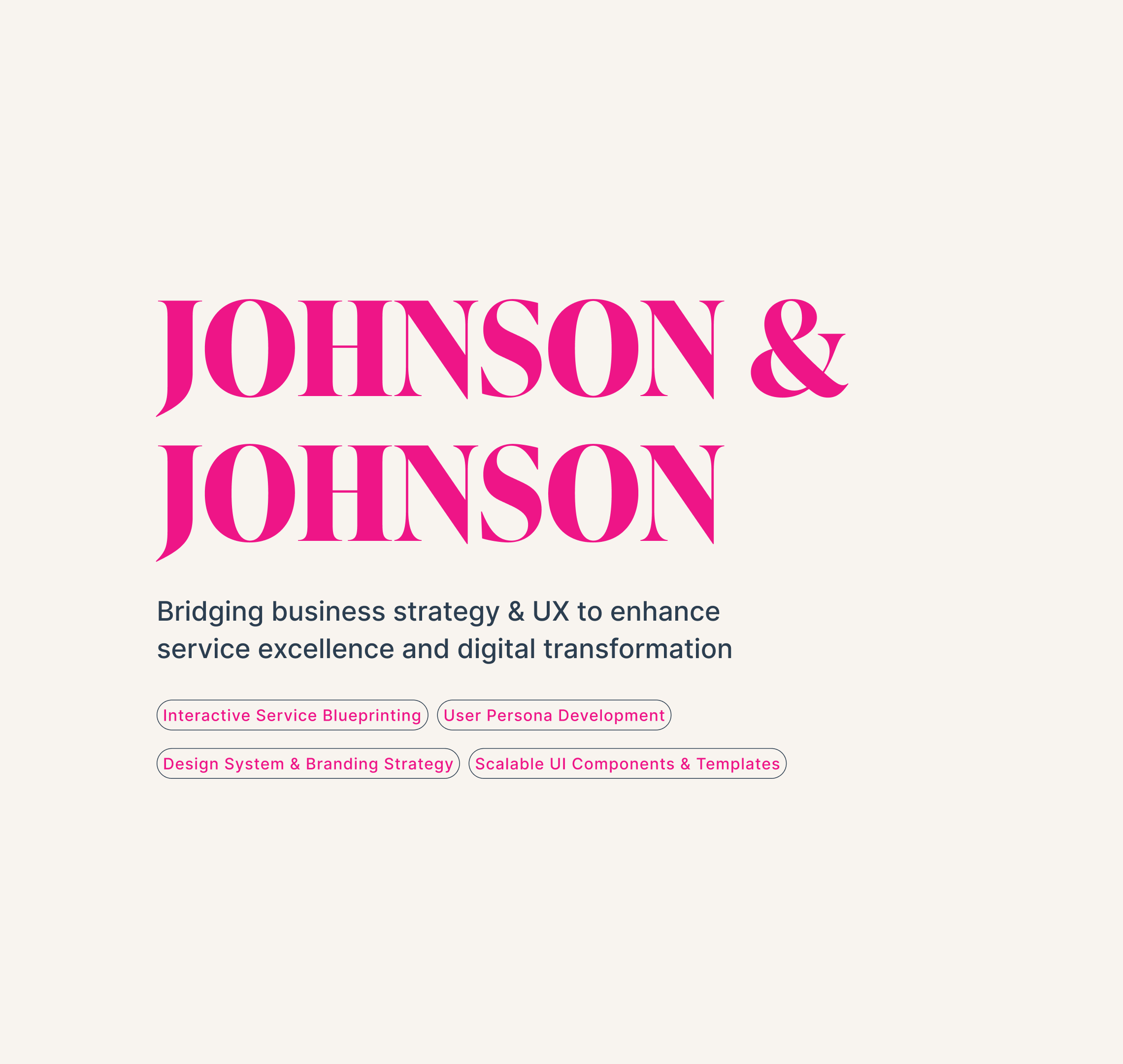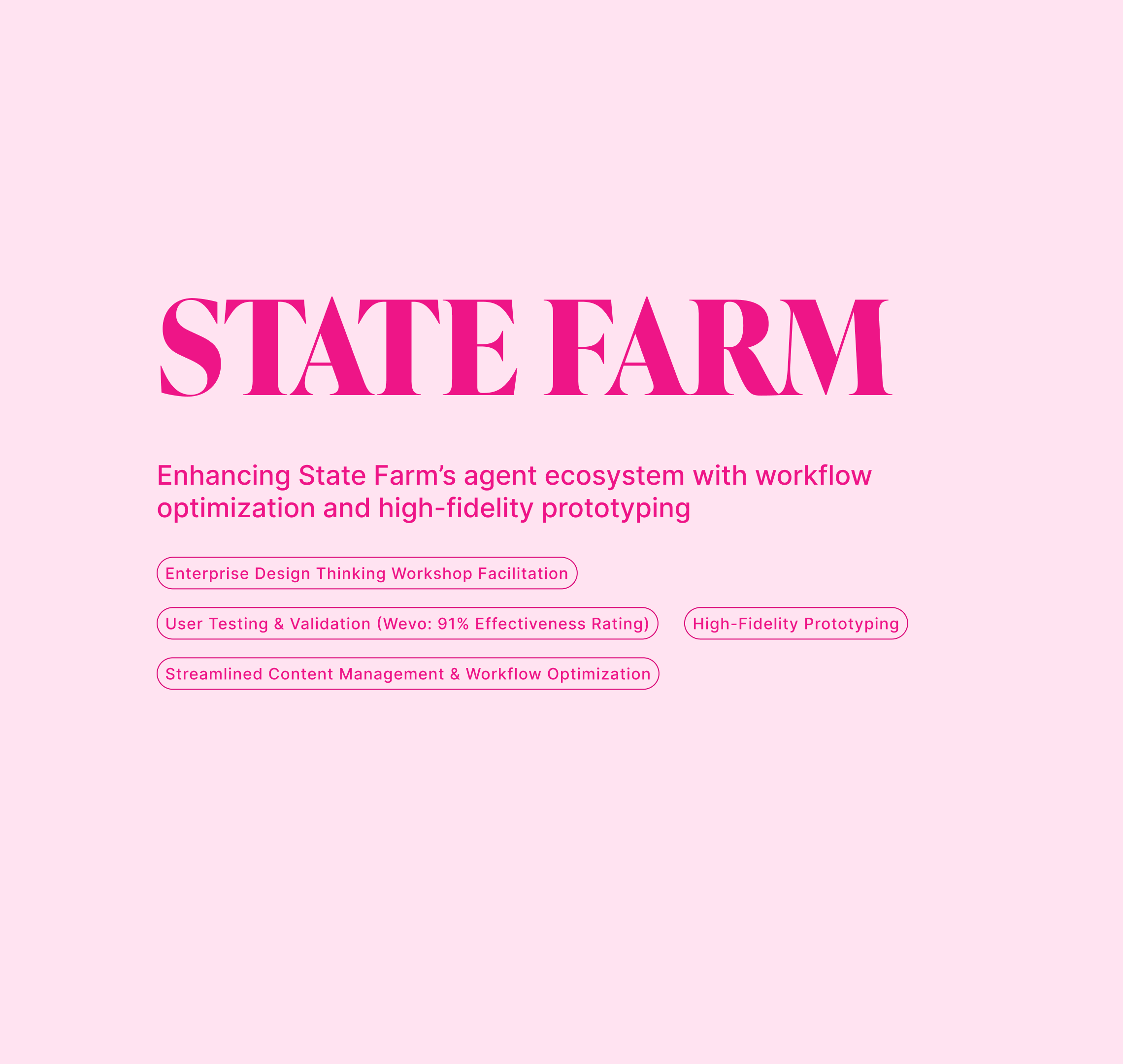Client
IBM Consulting
Deliverables
Future-State Workflow Prototypes, Scalable Design System, Interactive AI Workflow Templates
Year
2024
As enterprises rushed to integrate Generative AI (GenAI), IBM faced a critical challenge—teams struggled with fragmented AI tools, inconsistent workflows, and slow adoption. To bridge this gap, I worked alongside an internal team at IBM to launch the GenAI Enabled Workflows initiative, aiming to create a scalable framework that standardized AI integration. My role focused on designing intuitive workflow prototypes, refining AI-driven navigation, and developing a scalable design system that improved usability and adoption across enterprise teams.
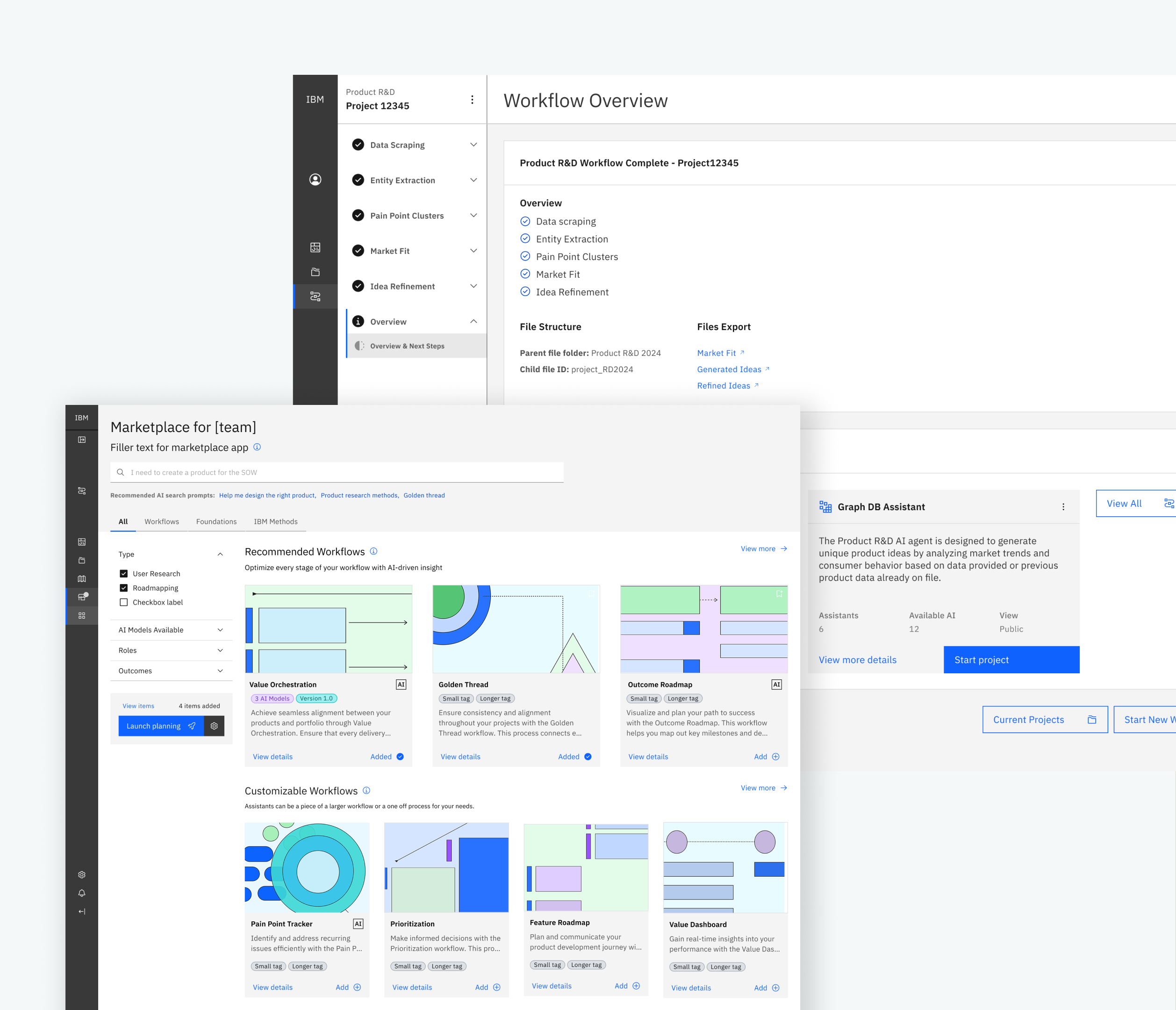
The Problem : Why AI Adoption Needed a Usability Overhaul
Generative AI (GenAI) is revolutionizing enterprise workflows, but adoption was far from seamless. IBM recognized a recurring challenge—many teams struggled to integrate AI-powered tools efficiently, limiting adoption and slowing innovation.
Key Roadblocks Enterprises Faced:
- Lack of Standardization – Fragmented AI tools meant that every implementation required extensive customization, increasing complexity.
- Disjointed AI Integration – Teams lacked a structured framework, leading to inconsistent and inefficient AI adoption.
- Poor Workflow Visibility – AI-powered recommendations surfaced in unclear ways, making it difficult for users to know when and how to act on insights.
IBM needed a scalable GenAI-enabled workflow framework to:
- Reduce lengthy AI adoption cycles by providing clearer implementation strategies.
- Unify AI-powered tools under a standardized design system for a seamless user experience.
- Improve visibility into AI recommendations, ensuring users could leverage insights at the right time.
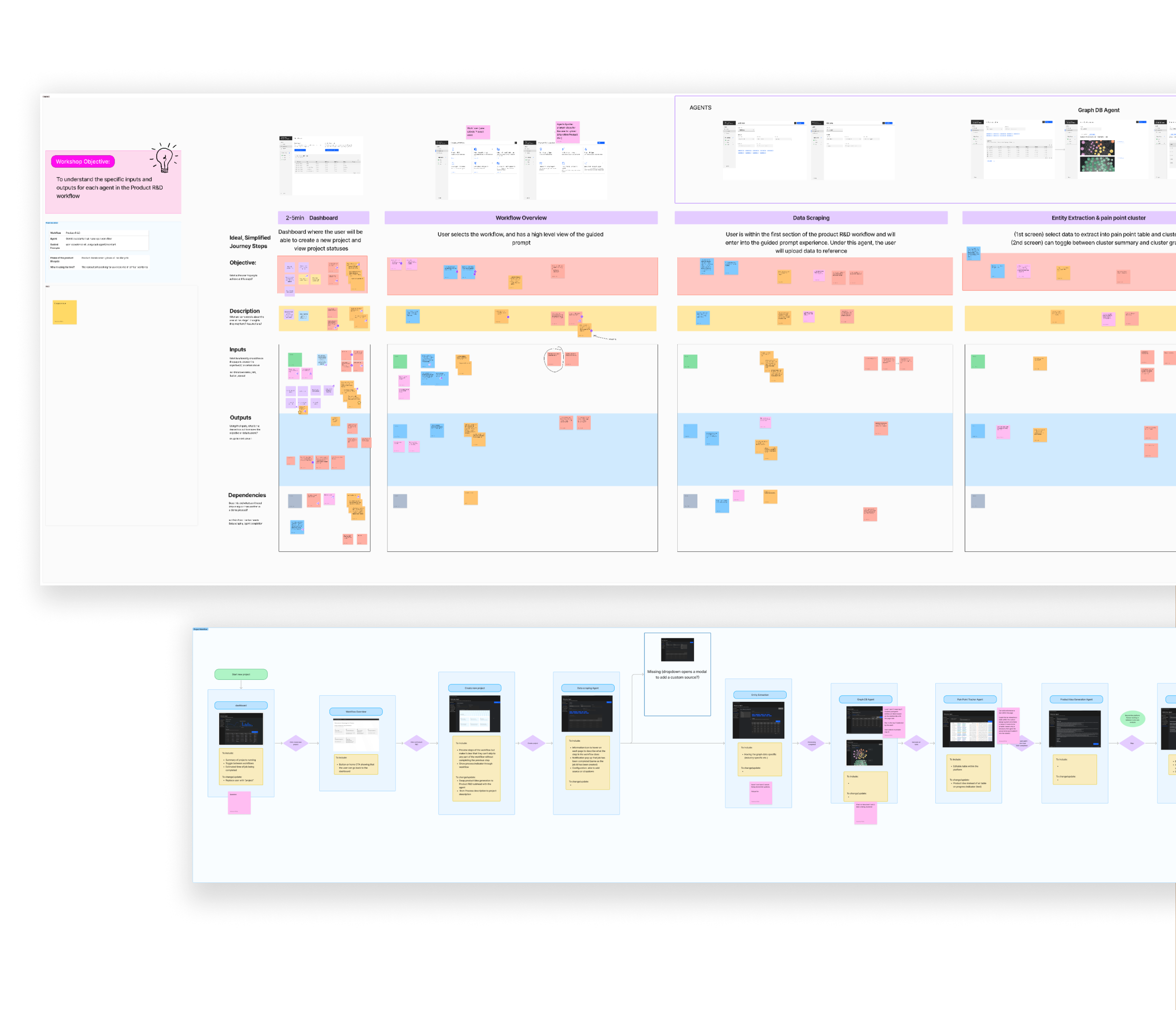
Key Contributions
As a Senior Designer on this project, I collaborated closely with the design lead to bridge the gap between AI’s technical complexity and enterprise usability. My focus was on designing user-centric experiences that made AI adoption intuitive and seamless, ensuring that complex workflows were transformed into frictionless, accessible solutions for enterprise teams.
- Designed Future-State Workflow Prototypes – Created intuitive visualizations to demonstrate seamless AI integration into enterprise product development.
- Leveraged Carbon Design System Creatively – Worked within system limitations to ensure cohesive and user-friendly AI tools across teams.
- Developed Interactive Prototypes – Enabled teams to test AI functionalities pre-development, reducing friction and improving adoption.
- Optimized Workflow Navigation – Refined AI recommendation placement to ensure insights appeared at key moments in the user journey.
- Created AI Workshop Templates – Designed structured templates for mapping AI inputs, outputs, and dependencies, enhancing cross-functional collaboration.
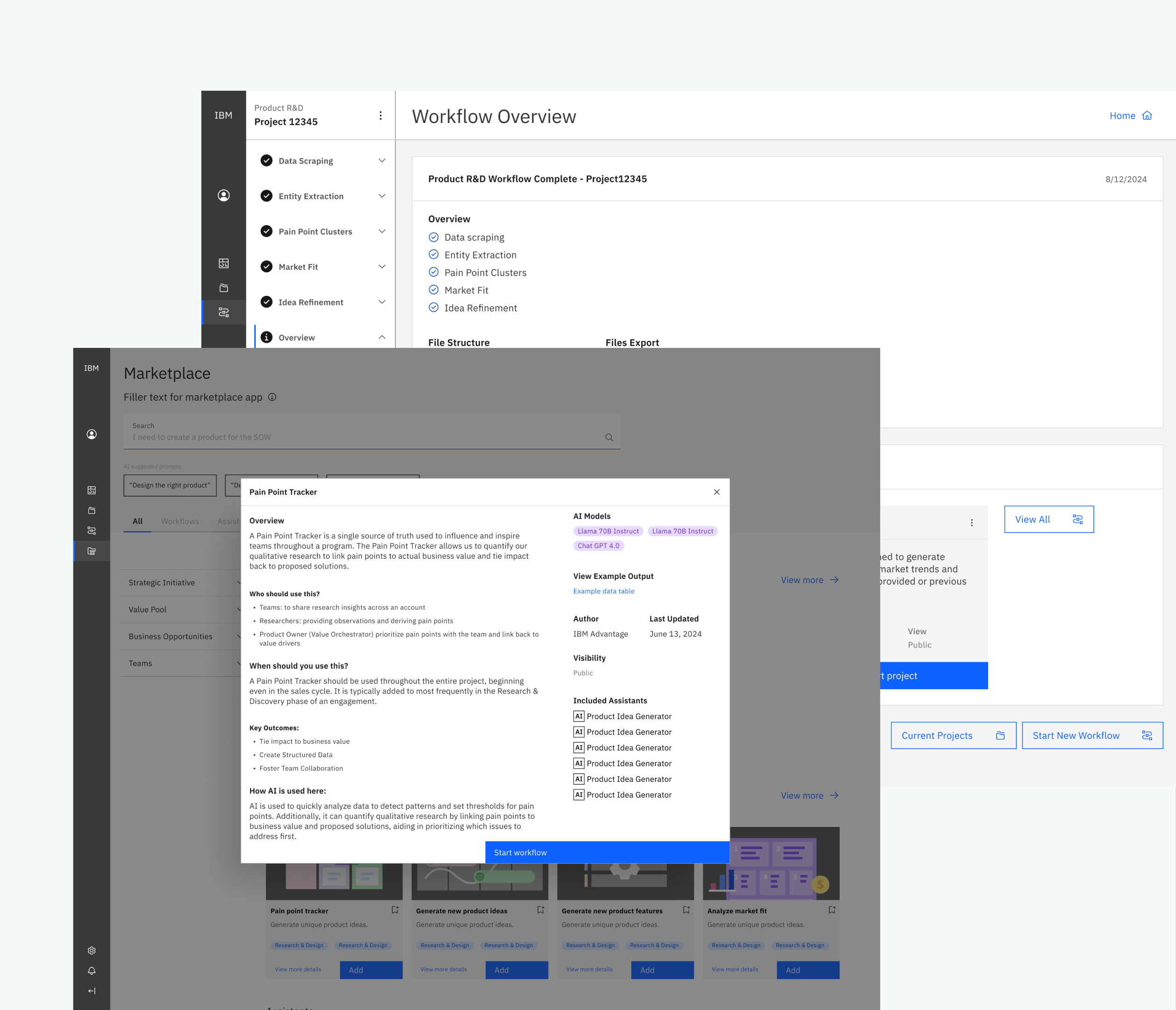
Iterations & Problem-Solving : Enhancing AI Workflow Adoption
Example Iteration: Clarifying AI-Driven Insights in Product Workflows
Before – AI insights felt disconnected from the workflow, leaving users unsure when and how to act on recommendations.
After – I redesigned the workflow UI, embedding AI insights contextually within key workflow steps, adding real-time interactive guidance to improve visibility.
✨ Impact: Users could now effortlessly understand and act on AI insights, leading to higher adoption rates and improved trust in AI-powered decision-making.
The Impact : Driving AI Adoption with Scalable UX
- Faster AI Adoption – Standardized workflows and interactive templates reduced onboarding friction, making AI easier to integrate into enterprise systems.
- Accelerated Product Development – AI-powered workflows streamlined product iteration cycles, reducing time-to-market.
- Stronger Client & Stakeholder Engagement – Interactive prototypes helped IBM showcase AI solutions, securing executive buy-in and alignment.

